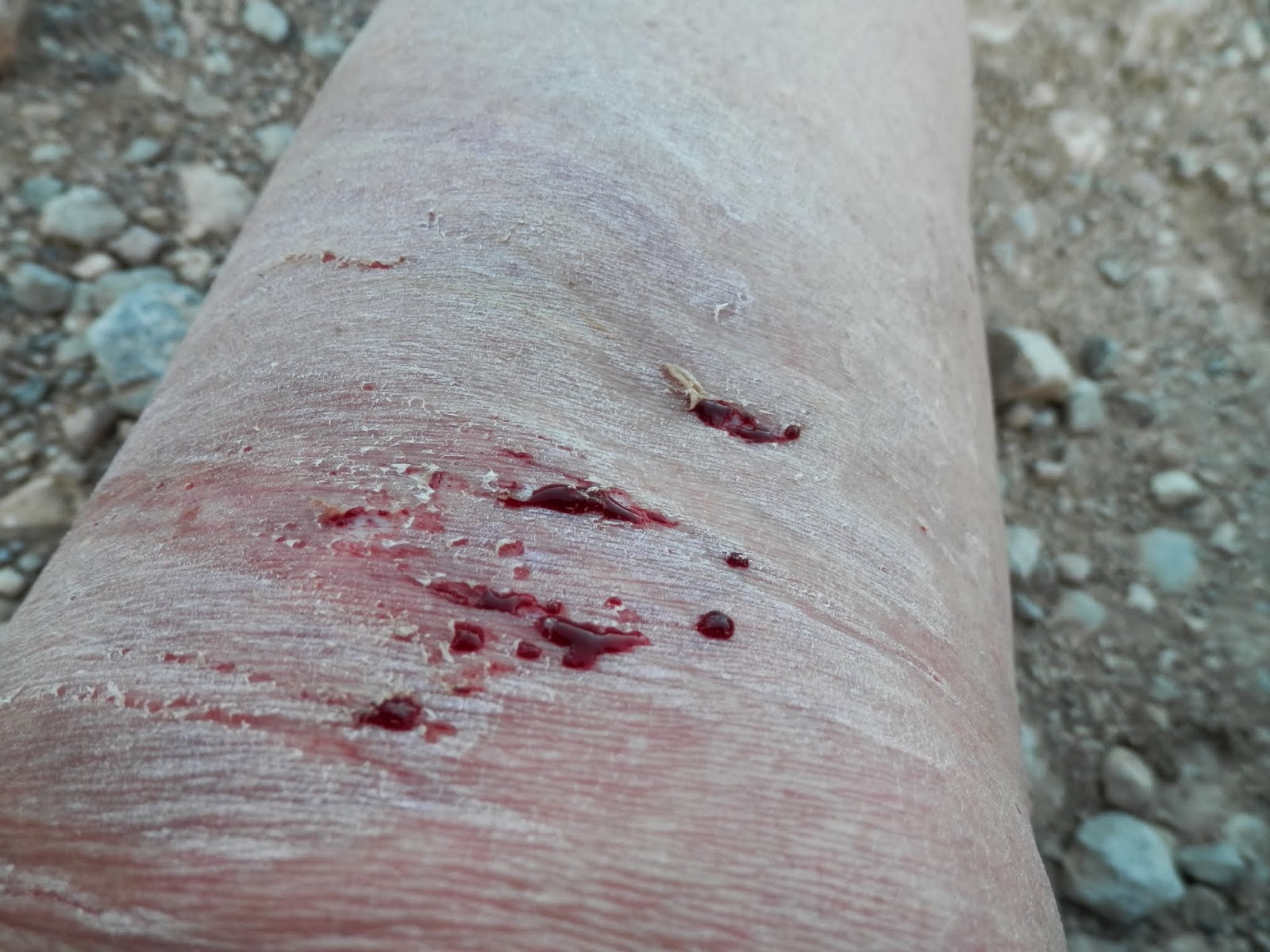14.5 kilometres to Peniscola (pen- ISC-ola) ancient fort town, circa 13th Century, along a` road’ ... in the broadest sense of the word from Ribimar.
 |
| The Tower Marking the Blind Spot |
 |
| First Sight of Peniscola |
 |
| A Bush Shaped Like a Giant Nob |
 |
| From Whence we Came |
This road runs along the seaboard
face of the Sierra Del Irta National Park and will never be made, except the
switch back section up an eighty metre or so mount upon which an ancient guard
tower stands, bleached and blasted white by dust and salt) before reverting
back to petrol tank scratching, ball breaking, wheel spinning aggregate.
 |
| View Panoramica |
 |
| The Mountains we Cycled Past |
 |
| Dropped Down to Sea Level (for a bit) |
The tower looks south down the
coast to which Peniscola would be blind (the direction we came from). Once it
would have provided advance warning to Peniscola should marauders or invaders have
sought that towns blind side, with the quick wind filling their sails and the
one or two shallow bays before the mount, where those invaders could beach
their ships and march the coastal path downhill (mostly) to the town (though to be fair
they would still have to f*%@ing mad to do it ... glad I’m not a suicidal 13th
century soldier looking for glory in the next life by getting well and truly
killed in this one).



Looking north the 3.5 kilometres as the crow
flies from the old watch tower (8.5 along the road, it’s that twisty) to Peniscola, the cliffs rise
almost vertically from the sea. Only the ancient harbour would allow safe
landing for those visiting the port on legitimate business, and one assumes the
beach beyond, where ships could be careened or beached. The old walled towns
buildings gleam white in the midday sun, rising to meet the old Templar
Castle, with its buff walls parapets and stair cases only shoulder wide, steep
enough to kill a falling man or stall a charge. Here and there those walls bare the scars of artillery fire; football sized pockmarks in blocks of stone dressing a cliff. I have no idea if those shots were badly aimed or deliberate. What I do know is that those shots were wasted utterly on walls that in some places are two metres thick, and as noted above literally just dress the under lying rock.
I suppose in my ignorance; having never been subjected to a barrage of cannon ball fire, I can't imagine what it was like for those inside the walls when cannon balls hit. However, when the gunfire ceased I think I would have been happier to be inside than out.
 |
| They Must have Been Slim 700yrs ago |
The strategic importance of the
castle (I think) is highlighted by the fact that the much more modern
lighthouse, is set so much lower down the sea facing side of the town on what
may have been a castle precinct sometime in the past.
 |
| A Very Pretty Town |
The road itself was tough. The going there was
hard enough but exciting because all that lay ahead was undiscovered. The
return was nearly, very nearly a nightmare. The wind had been building in all
day, and sped us forward. On the return, that same wind was in our face (the forecast had predicted the wind to turn ... it did, the following morning). The wind was shearing along the seafront from the south, turbo rolled along the
escarpment into a gusting, dust hurling forcefield that defied low gears and in
addition to the long steady gradients that eventually stopped me dead in my
tracks, turning my bike into a wheeled walking stick and faithful leaning post.
My quadriceps eventually cramped under minimal load; forcing me to kneel at the roadside to
stretch, without inducing calf cramps. This so I could then walk the gradual
but lengthy inclines to the next downhill stretch of track, and then roll,
brakes on down what can be described as scree, dust and nubs of boulder jutting
shiny and smooth from the car width path. Amanda took a fall when we were
literally a mile from home, and boofed her wrists and knee, and collected some
nice gritty road rash.
 |
Oops
However and it’s a big however
Peniscola (Penis cola tee hee hee) was worth it. It is a tiny walled town,
maybe only as big as the Tower of London and its immediate precincts and moat,
perched on a point of land between the rocky jagged coast of Alcossebre and
Amposta (where the rice paddy is found).
It’s a real window onto a past we can’t even begin to imagine, important
enough to have been augmented and maintained by kings and popes, and in use up
until the Spanish civil war.
We revisited the place with the car a few day later, and took some more pictures, which we will post shortly.
|
No comments:
Post a Comment